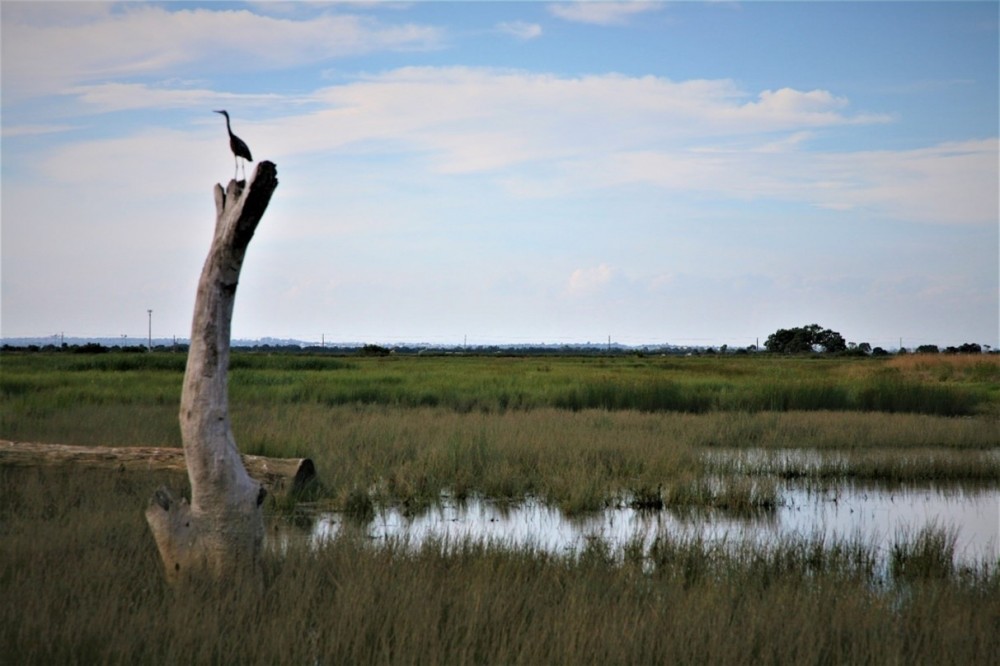Context:
Recently, India’s first ‘teal carbon’ study was undertaken in Keoladeo National Park (KNP).
More on the news
- The study highlighted the significance of wetland conservation in addressing the challenges of climate adaptation and resilience.
- The comprehensive review at KNP was conducted by researchers from the Central University of Rajasthan, in collaboration with U.S. Environmental Protection Agency (EPA) and Siobhan Fennessy from Kenyon College, Ohio, U.S.
Teal Carbon
- It refers to carbon stored in non-tidal freshwater wetlands, encompassing carbon sequestered in vegetation, microbial biomass, and dissolved and particulate organic matter.
- The colour-based terminology reflects the classification of the organic carbon based on its functions and location rather than its physical properties.
- At the global level, the storage of teal carbon across the ecosystems is estimated to be 500.21 petagrams of carbon (PgC).
- Peatlands, freshwater swamps, and natural freshwater marshes account for significant amount of this storage.
Keoladeo National Park (KNP)
- The National Park was notified by the Government of Rajasthan in 1981.
- KNP has a unique mosaic of habitats that include wetlands, woodlands, scrub forests, grasslands that supports an amazing diversity of both plant and animal species.
- KNP is often referred as ‘Birders Paradise’.
- It is a Ramsar site and a World Heritage site.
Importance of Wetlands and Teal Carbon Ecosystem
- While wetlands play a vital role in regulating greenhouse gases, they are highly susceptible to degradation from pollution, land use changes, water extraction, and landscape alterations.
- Degraded wetlands can emit methane and carbon dioxide into the atmosphere.
- Ensuring sufficient water supply and selecting appropriate vegetation is essential for conserving wetlands, which will help sustain teal carbon pools.
- Additionally, the teal carbon ecosystem will contribute to raising groundwater levels, mitigating floods, and reducing heat island effects, thus supporting sustainable urban adaptation.
Wetlands
- According to the definition of wetland under Wetlands (Conservation and Management) Rules 2017, an area of marsh, fen, peat land or water; whether natural or artificial, permanent or temporary, with water that is static or flowing, fresh, brackish or salt, including areas of marine water the depth of which at low tide does not exceed six meters, are considered as wetlands.
- Water saturation (hydrology) largely determines how the soil develops and the types of plant and animal communities living in and on the soil. Wetlands may support both aquatic and terrestrial species.
- The prolonged presence of water creates conditions that favour the growth of specially adapted plants (hydrophytes) and promote the development of characteristic wetland (hydric) soils.
Other types of carbon
- Black carbon: It is the sooty black material emitted from gas and diesel engines, coal-fired power plants, and other sources that burn fossil fuel.
- Brown carbon: It is a light-absorbing organic carbon that coexists with black carbon.
- Blue carbon: It is simply the term for carbon captured by the world’s ocean and coastal ecosystems.
Also Read:
Havisure: India’s First Indigenously Developed Hepatitis A Vaccine

